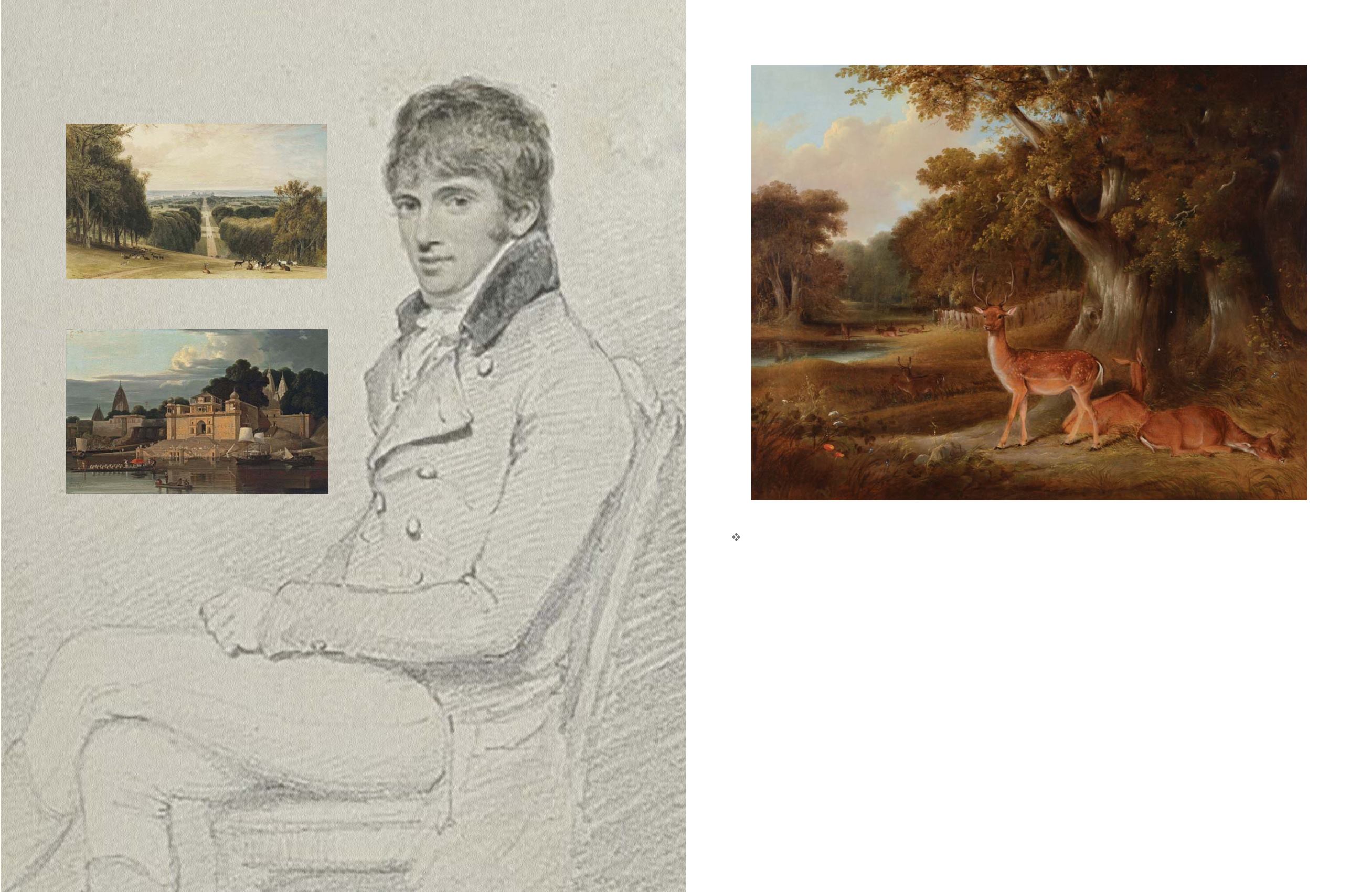

36
37
21
WILLIAM
DANIELL
(1769–1837)
Deer in a Wooded Landscape
Oil on canvas
23.5 x 29.25 in (59.5 x 74 cm)
$ 40,000 ‒ 60,000
Rs 25,60,000 ‒ 38,40,000
PROVENANCE:
Frost & Reed, London
Acquired from the above in 1989
Sotheby's, New York, 9 June 1989, lot 227
EXHIBITED:
Possibly at Royal Academy, London,
1828, No. 204 with the title
View in
Windsor Park, near Bishopsgate
Almost a decade after his return to England, Daniell embarked on a journey
of the British coastline painting watercolours for his greatest book yet—
A
Voyage Round Great Britain
. Soon after, in 1822, “William Daniell was elected a
Royal Academician on the strength of his oil paintings, but his principal living
was made from publishing aquatints after watercolour views of British sites.”
(Matthew Hargraves,
Great British Watercolors
, New Haven: Yale University,
2007, online) Daniell’s versatility as an artist is evident in his mastery over all
three media.
The present lot, an oil on canvas titled
Deer in a Wooded Landscape
, was most
likely painted between 1827 and 1830 when he became extremely interested
in the scenery around Windsor and Eton. In 1827, 1828 and 1830, he exhibited
a total of five oil paintings of Windsor Castle at Royal Academy exhibitions,
and it is possible that the present lot was exhibited in 1828 with the title
View
in Windsor Park, near Bishopsgate
. With its focus on nature and wilderness,
the present lot demonstrates characteristics of Romanticism, which was the
zeitgeist
of early 19
th
century European art. Daniell’s oil paintings from this
period are considered to be among his finest.
T
his bucolic forest scene is a fine example of the
work of English classical landscape artist and
printmaker, William Daniell. Daniell was born
in Surrey in 1769 and after his father’s death in 1779,
moved in with his uncle Thomas, a landscape artist
himself who inspired and mentored Daniell. Between
1786 and 1794, Daniell accompanied his uncle to India
as his assistant in making preparatory drawings and
sketches for a series of prints that Thomas was working
on. Together they collaborated on
Oriental Scenery
, a
monumental six‒volume work of 144 hand‒coloured
aquatint engravings, selected from those made during
their years in India.
The Daniells’ picturesque scenes of India, which
included famous buildings and pilgrimage sites, set
a precedent that resulted in the Company style of
painting in the 18
th
and 19
th
centuries. The moniker
was borrowed from the British East India Company,
whose expanding presence on the subcontinent
created a demand for paintings and illustrations of the
native landscape that they could send back as records
of their time in the country. “It was thus a time of
colonial takeover, but also a time of discovery of the
exotic, and it defined how India was seen by painters
such as Thomas and William Daniell.” (Roland Steffan,
“A picturesque journey through India 1786‒1794,”
The
Newsletter
, No. 61, Autumn 2012, Leiden: International
Institute for Asian Studies, online)
Portrait of William Daniell by Richard Westall, circa 1800s
Source: Wikimedia Commons
Daniell’s works are coveted by collectors for their
historical context and the skill of technique that is
largely lost today.
The Long Walk, Windsor Great Park, the Castle beyond
Christie’s, London, 5 July 2011, lot 144
Sold for £73,250
Shivala Ghaut and Cheyt Singh’s House near Benares
Christie’s, London, 15 December 2016, lot 50
Sold for £485,000


















